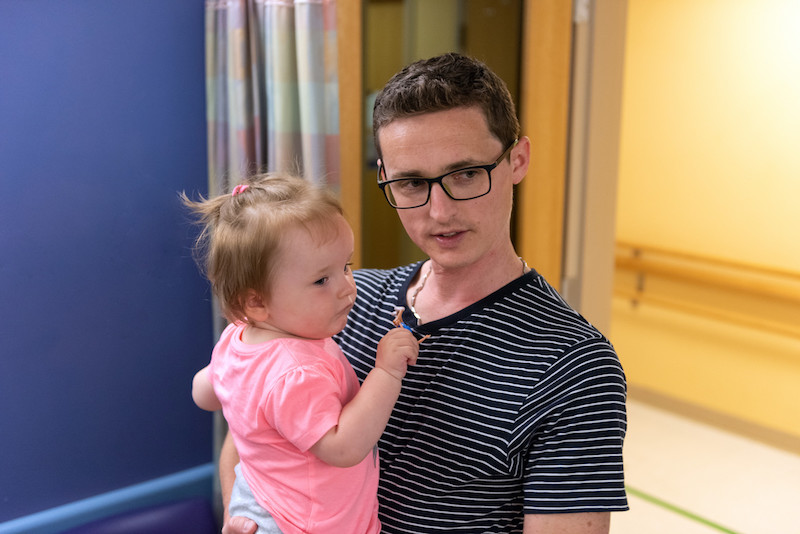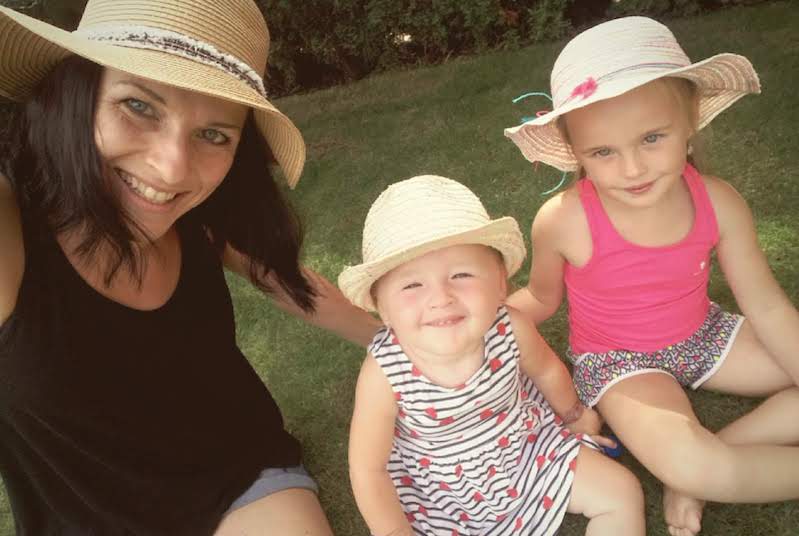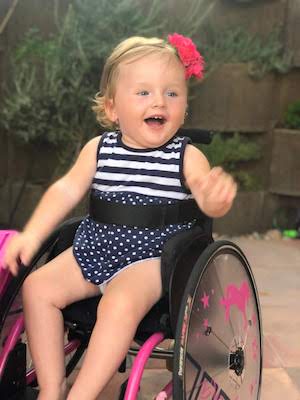Sofie’s story: A new gene therapy treatment for SMA

Sofie Petrovická sits up in the exam room, smiling and laughing with her physical therapist, Elizabeth Maczek. Though she’s just over a year old, sitting on her own is no minor feat for Sofie — in fact, it’s nothing short of a miracle.
Sofie was just 3 months old when she was diagnosed with spinal muscular atrophy (SMA) type 1, a rare genetic condition that causes weak muscles throughout the body. In the past, infants diagnosed with this type of SMA could never sit up independently. Most were unable to breathe on their own by age 1, and the vast majority didn’t live past age 2.
Fortunately for Sofie and her family, two recent breakthroughs in treatment have vastly improved the future for children with SMA — first the drug Nusinersen, and more recently, a new FDA-approved gene therapy treatment. Given in a one-time infusion, gene therapy prevents further motor neuron and muscle degeneration by replacing the defective or missing gene (SMN1) that causes SMA with an intact SMN1 gene. So far, the results of treatment have been life-changing.
Sofie’s SMA journey
One year after receiving gene therapy treatment through a clinical trial at Boston Children’s Hospital, Sofie is not only able to breathe on her own and eat by mouth, but is also sitting up, moving her head, raising her hands, saying words, and rolling in her small wheelchair. These are all milestones her parents, Iveta and Lubos, weren’t sure they would ever see.

The couple first became suspicious that something might be wrong with Sofie when they noticed she wasn’t moving her head the way her older sister, Aneta, had. They took her to her pediatrician in their home in the Czech Republic, who promptly sent them to a neurologist. The news was grim from the start. “The neurologist told us he had a suspicion it might be a bad disease, called spinal muscular atrophy, but he couldn’t be sure until he did more testing, ” says Iveta.
The next week, a blood test confirmed the frightening news — Sofie was diagnosed with SMA type 1. But while they awaited a diagnosis, the family jumped into action. Iveta took to the internet, searching for any information she could find about SMA and its treatment.
Discovering gene therapy treatment
“It was an intense time. We didn’t sleep, but spent each night investigating what to do, where to get treatment, and how to get treatment,” recalls Iveta. They read about the drug Nusinersen, which had shown promising results, and also learned about a new gene therapy treatment that was still in clinical trial.
“I knew that Nusinersen was available in our country at that time, but when I heard about the gene therapy, I wanted to learn more about that option and where it was available,” says Iveta. “Since the study was ongoing, I reached out to parents who were part of the finished first phase of the trial to ask them how the treatment worked and how their children were doing.”

Traveling to Boston for a clinical trial
After hearing positive reviews from all the parents, she and Lubos decided they wanted Sofie to be part of the clinical trial, and reached out to Dr. Basil Darras, the director of the Clinical and Research SMA Program. “The day she was confirmed with SMA, we sent an email to Boston Children’s. The next day, we got a response back from Dr. Darras that she should be eligible for the trial.” The couple was elated.
But getting to Boston presented its own challenges. They had to secure visas and passports, and Sofie’s participation in the clinical trial would require spending a full year in Boston, a city they knew little about in a country they had never visited. To further complicate matters, the young family had just moved into a new house. However, just two weeks after Sofie’s diagnosis, Iveta and Sofie boarded an airplane to Boston, accompanied by Iveta’s sister, who was more confident in English than Iveta. Lubos and Aneta joined them a few days later, once Sofie’s eligibility for the trial was confirmed.

Sofie received gene therapy treatment in May 2018. “I think we started to see improvements about three weeks after the treatment, when we noticed she had head control for the first time,” says Iveta.
In June, Sofie began weekly physical therapy (PT) with Maczek. As the months went by, the milestones started racking up. Sofie learned to find balance and then began sitting on her own. “Every month she reached a new milestone,” says Iveta. “She started playing with dolls, she started reaching. It was so wonderful to watch. Like a miracle.”
The milestones keep coming
In January, Sofie got a wheelchair and has learned how to push it on her own. Iveta says the wheelchair has given her the independence to get around a room and get what she wants. She’s also slowly starting to walk using a gait trainer.

“It’s just awesome to see how far she’s come,” says Maczek. “To see her continuing to make progress, and be able to put more and more weight on her legs. For a kid with SMA type 1, that’s unheard of.”
The couple is well aware of their good fortune.
“I can’t imagine the parents of these kids just five years ago, having the doctors tell them their child will die in one or two years,” says Iveta. “She still may be vulnerable in the future, we just don’t know yet. But she can eat on her own, she can breathe on her own. Her personality is really blooming quickly and she’s happy. We couldn’t ask for anything more.”
When it came time for the family to return to their home in the Czech Republic, it was bittersweet. “I think this past year in Boston was the hardest time in our lives, but it was also wonderful, knowing we were getting the best treatment for our daughter and watching her get better,” says Iveta. “We are excited to finally go home, but we will miss Boston Children’s.”
Learn more about gene therapy treatment for SMA.
Related Posts :
-

A case for Kennedy — and for rapid genomic testing in every NICU
Kennedy was born in August 2025 after what her parents, John and Diana, describe as an uneventful pregnancy. Soon after delivery, ...
-

The journey to a treatment for hereditary spastic paraplegia
In 2016, Darius Ebrahimi-Fakhari, MD, PhD, then a neurology fellow at Boston Children’s Hospital, met two little girls with spasticity ...
-

The dopamine reset: Restoring what’s missing in AADC deficiency
In March 2023, a young girl came to Boston Children’s Hospital unable to hold up her head — one striking symptom ...
-

Thanks to Carter and his family, people are talking about spastic paraplegia
Nine-year-old Carter may be the most devoted — and popular — sports fan in his Connecticut town. “He loves all sports,” ...





